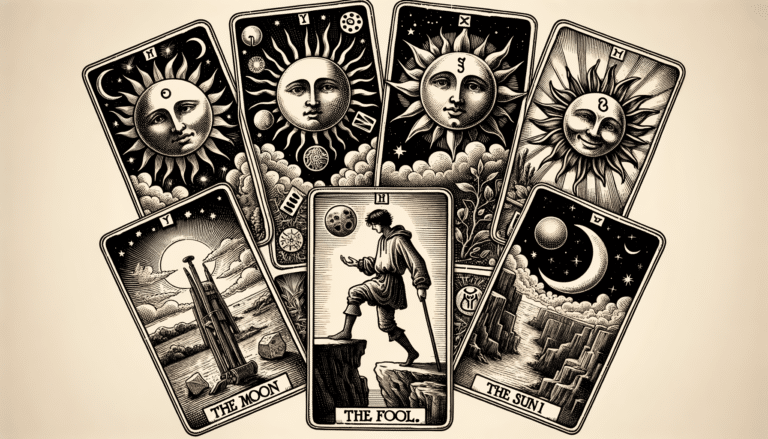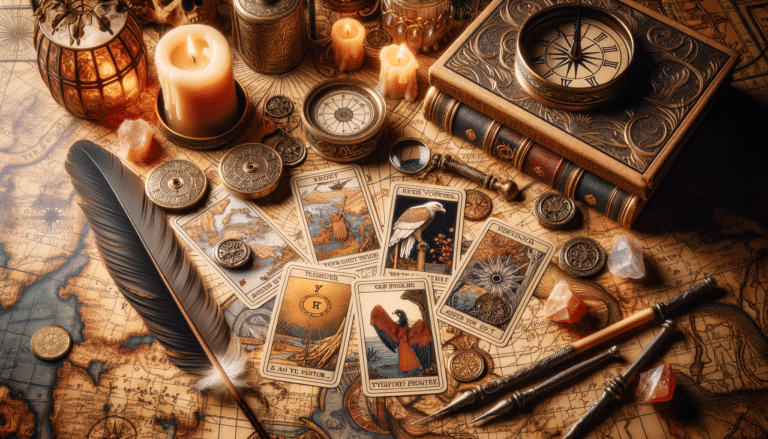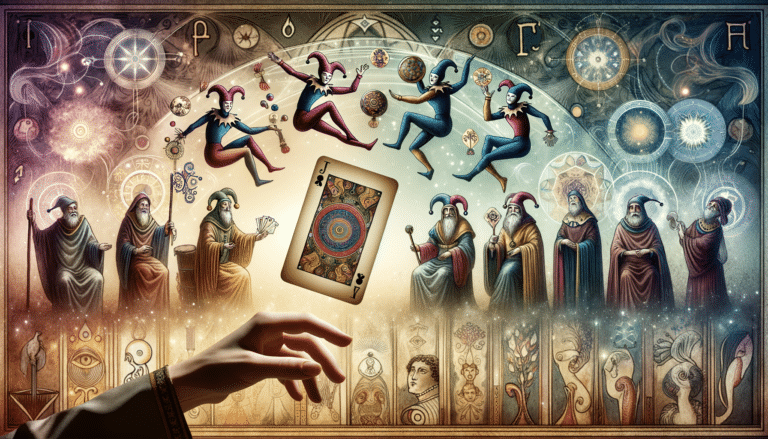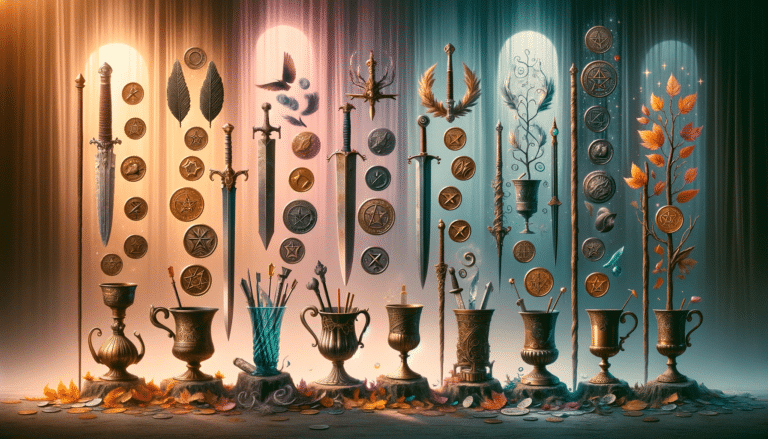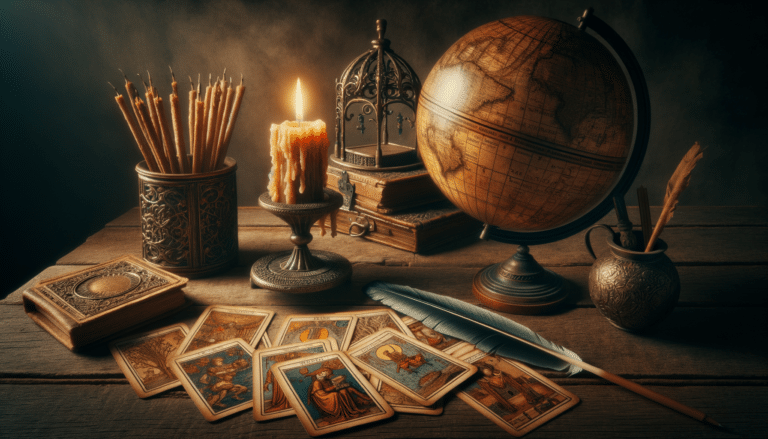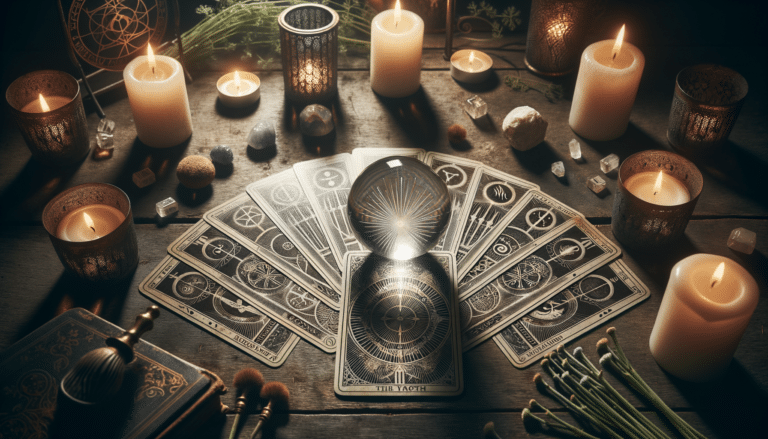Tarot’s Role in Historical Spirituality: Top 3 Insights
As a mirror to the soul, tarot cards have reflected the spiritual quests of humanity for centuries.
You’re about to delve into the enigmatic origins of tarot’s role in historical spirituality, where mysticism and artistry first intertwined.
Understanding tarot’s role during the Renaissance will shed light on how spirituality and daily life were inseparably linked for our ancestors.
You’ll also discover how tarot’s evolution over time has continued to influence modern spiritual practices.
These insights don’t just offer a glimpse into tarot’s past – they reveal the enduring power of symbols and their ability to speak to the human spirit across ages.
Embrace this journey through tarot’s history and its profound spiritual impact on society.
Key Takeaways
- Tarot’s origins trace back to ancient beliefs and spiritual practices, making it a tapestry of diverse cultures and traditions.
- During the Renaissance, tarot became deeply intertwined with spirituality and art, with its imagery steeped in symbolism and used as a tool for spiritual insight.
- Modern interpretations of tarot have expanded beyond fortune-telling, emphasizing its role as a tool for self-reflection, personal growth, and as a source of wisdom in various spiritual practices.
- Tarot’s enduring impact lies in its ability to speak to the collective unconscious, with its archetypal themes transcending time and place, influencing art, literature, and psychology.
The Mystical Origins of Tarot’s Role in Historical Spirituality
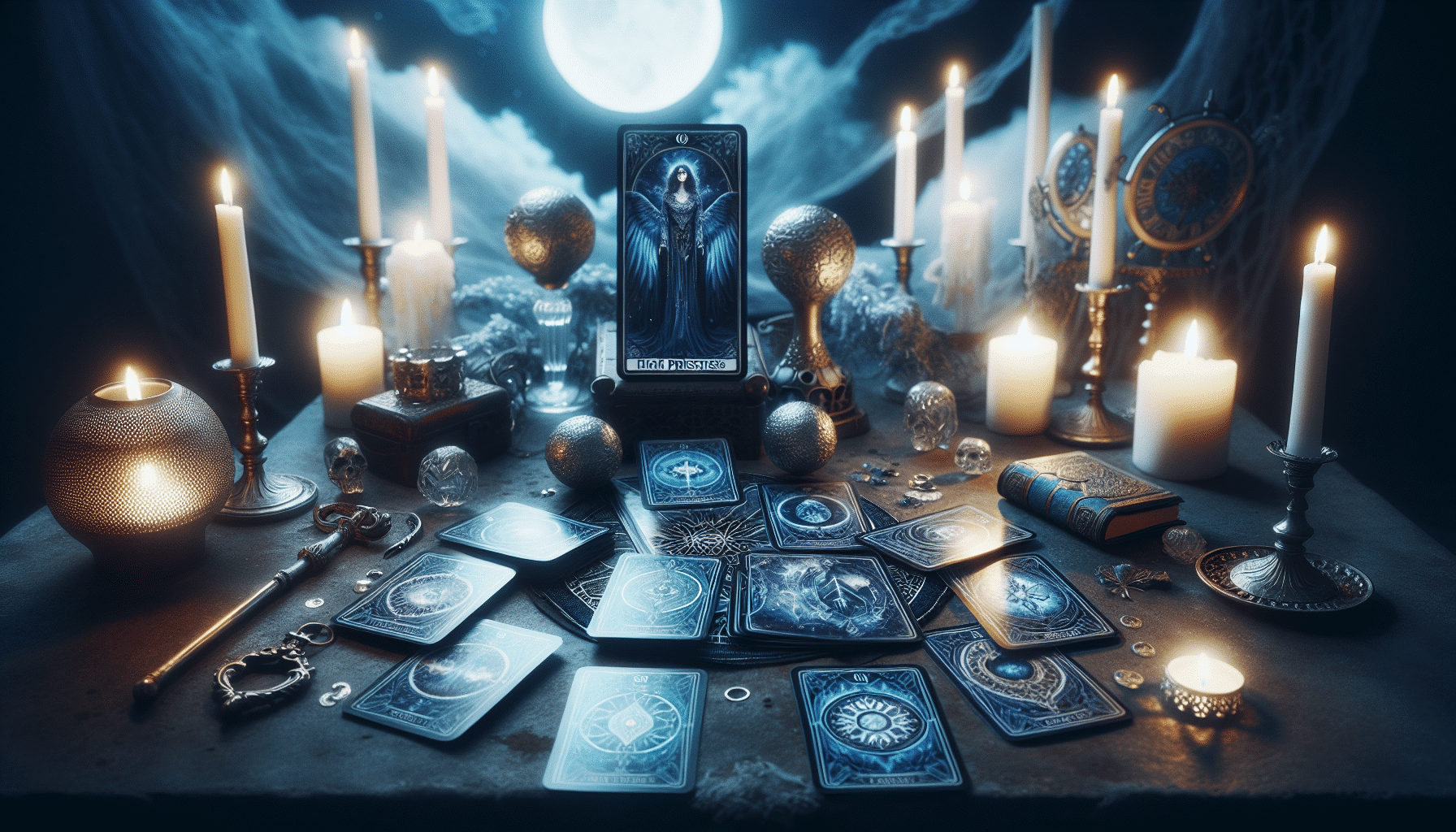
Delve into the mystical origins of tarot, and you’ll uncover a tapestry of ancient beliefs and spiritual practices. The journey through tarot’s past isn’t just about the cards themselves – it’s an exploration of the human desire to understand the unknown.
Within this enigmatic world, divination practices have thrived, offering glimpses into the future and insights into the present.
As you trace tarot’s roots, you’ll encounter a blend of cultures and traditions that have shaped its development. Occult symbolism is deeply woven into the fabric of tarot, with each image on the cards holding specific esoteric meanings. These symbols speak to the collective unconscious, resonating with archetypal themes that transcend time and place.
You’re not just holding pieces of cardboard; you’re interacting with a legacy of mystical tools that have been used for centuries. The tarot deck is a mirror reflecting life’s complexities and a window into the soul’s inner workings. Its historical impact isn’t solely in the realm of the spiritual but has also influenced art, literature, and psychology.
As you lay out the cards, remember you’re participating in an age-old ritual, connecting with the wisdom of the ancients through the practice of divination.
Tarot in Renaissance Spirituality
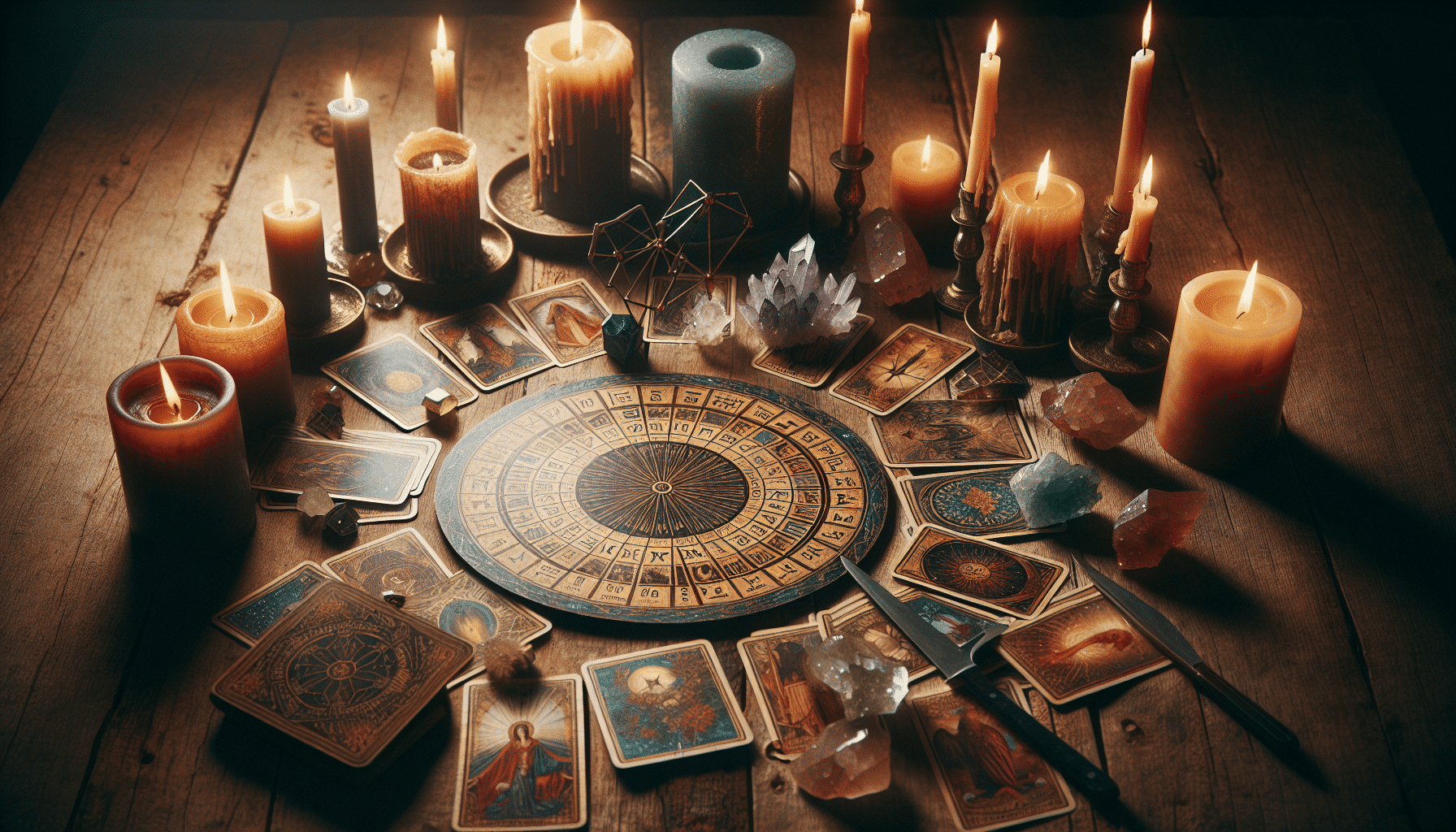
As you explore tarot’s role in Renaissance spirituality, you’ll discover its profound integration into the era’s artistic and philosophical awakening. The tarot deck, rich with Renaissance symbolism, served as both a reflection of contemporary cosmology and a tool for spiritual insight.
Scholars and mystics of the period used these cards to navigate the confluence of art, science, and the divine.
Here are key insights into how the tarot connected with the spiritual landscape of the Renaissance:
-
Renaissance Symbolism: Tarot imagery was steeped in the era’s iconography, embodying religious and mythological themes that were central to the period’s worldview.
-
Philosophical Alignment: The cards aligned with Renaissance humanism, emphasizing individual journey and potential, mirroring the philosophical shift towards personal enlightenment.
-
Occult Resurgence: The fascination with Hermeticism and Neoplatonism during the Renaissance fueled an occult resurgence, with tarot often at the heart of esoteric practices.
-
Artistic Expression: Tarot decks were often crafted by prominent artists of the time, becoming a form of visual art that conveyed spiritual and allegorical narratives.
Check out our Tarot Decks & Oracle Cards here…
Tarot’s Evolution and Influence
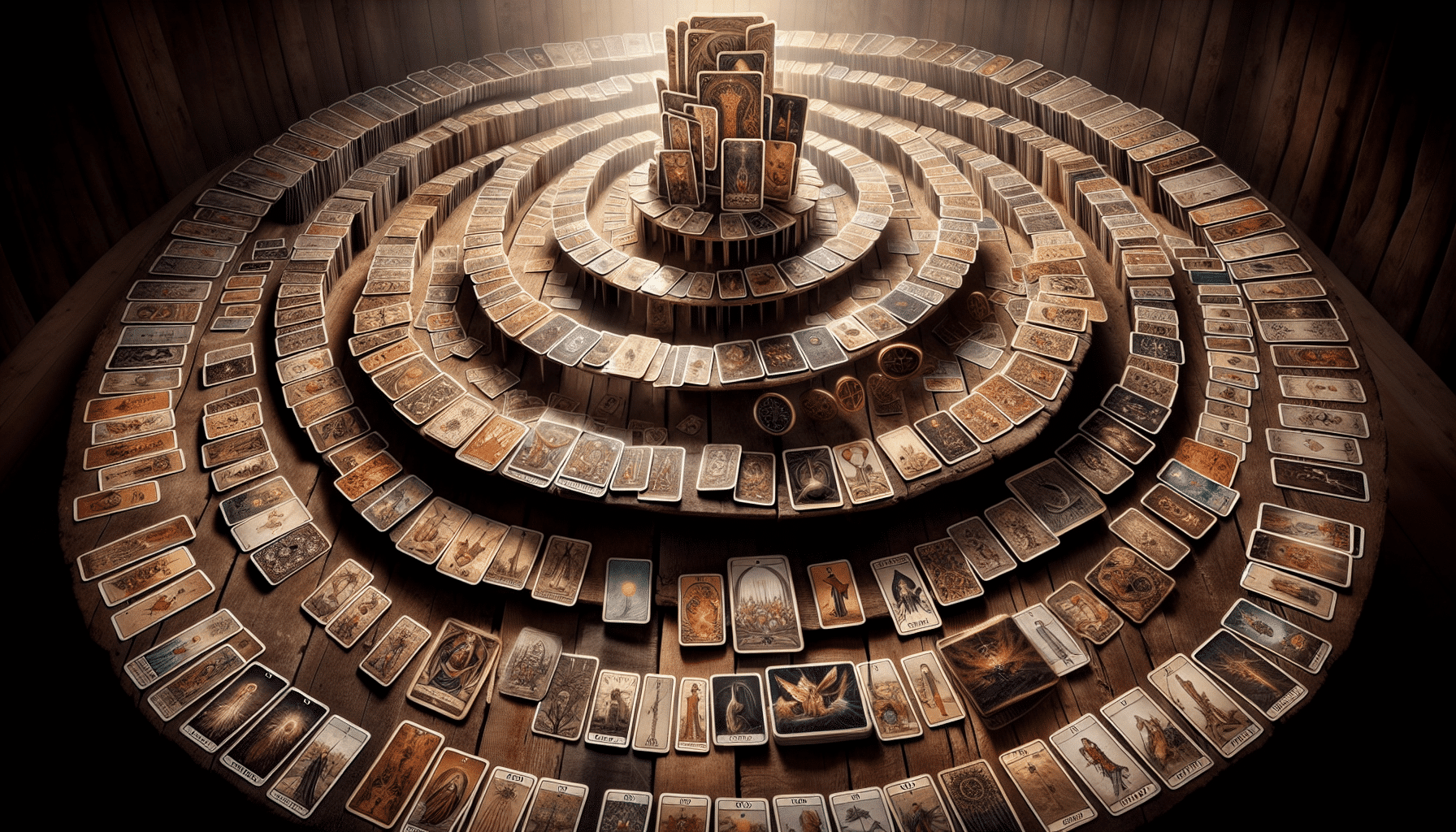
You’ll find that the tarot’s evolution is marked by its growing influence on various spiritual and cultural movements beyond the Renaissance. Initially, these enigmatic cards were used for games, but over time, they became intertwined with divination practices, offering insight into the complexities of the human experience.
As you delve deeper, you’ll notice that modern interpretations of tarot have expanded dramatically. No longer just a means for telling fortunes, tarot now serves as a tool for self-reflection and personal growth. It’s woven into the fabric of New Age spirituality, where the symbology of the cards is often linked to psychological archetypes and personal transformation.
The tarot’s adaptability has allowed it to remain relevant in an ever-changing world. It has been embraced by various subcultures and has even influenced art, literature, and popular media. You’re likely to see tarot references in everything from music videos to fashion. This resurgence has brought tarot to a broader audience, who seek both the wisdom of the old and the innovations of the new in their spiritual practices.
In essence, tarot’s journey through time mirrors our own quest for understanding. As you explore tarot’s past, you’re also uncovering its continued impact on our collective search for meaning.
Learn more with these best tarot books here…
Conclusion
So, you’ve delved deep into tarot’s past, unearthed its Renaissance soul, and tracked its transformative journey.
Feeling enlightened yet? Or just mildly entertained by the thought of your ancestors turning to illustrated cards for divine wisdom?
Either way, let’s shuffle our modern perspectives and chuckle at the mystical tapestry we’re still weaving.
Because, let’s face it, who doesn’t love a good card trick dressed up as a spiritual quest through the ages?
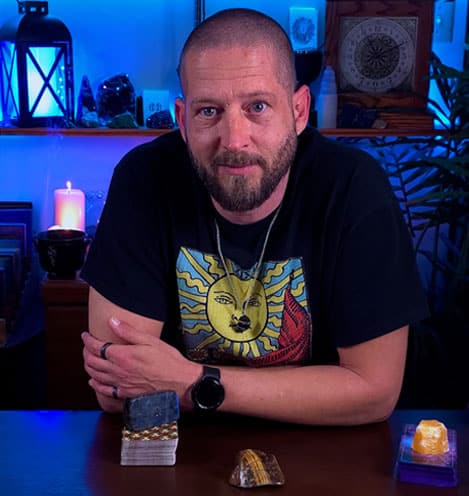
About The Author – Allen Hill
Allen Hill, the force behind Unknown Truth Tarot, has a YouTube following 6-times bigger than the population of his hometown, Miamisburg, Ohio. From his spiritually rich blog on Tarot and crystals to his role as CEO of The Unknown Truth Tarot Metaphysical Shop, Allen’s passion for the metaphysical shines through.
A master Tarot reader and “crystal junkie,” Allen is also a devoted dad to Dylan, 10, and Destiny, 24. When he’s not immersed in the world of Tarot and crystals, he enjoys poker and video gaming sessions, often humorously outplayed by Dylan.
Follow Allen on Twitter, Instagram, Facebook, TikTok, and subscribe to his Unknown Truth Tarot YouTube channel to join him on a journey of spiritual growth and self-discovery.

